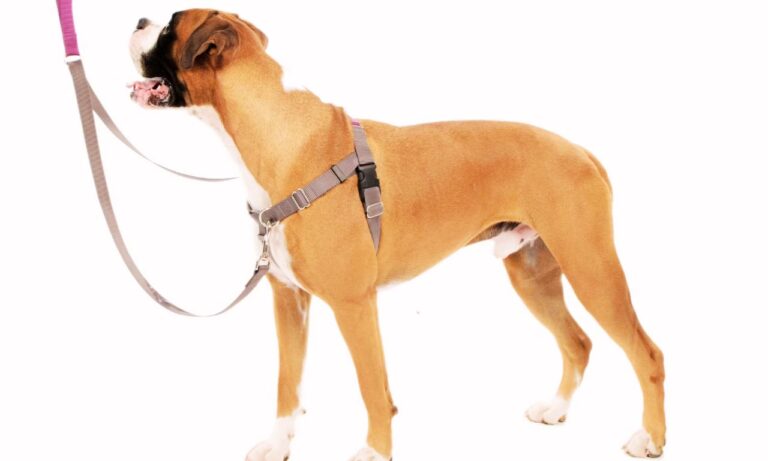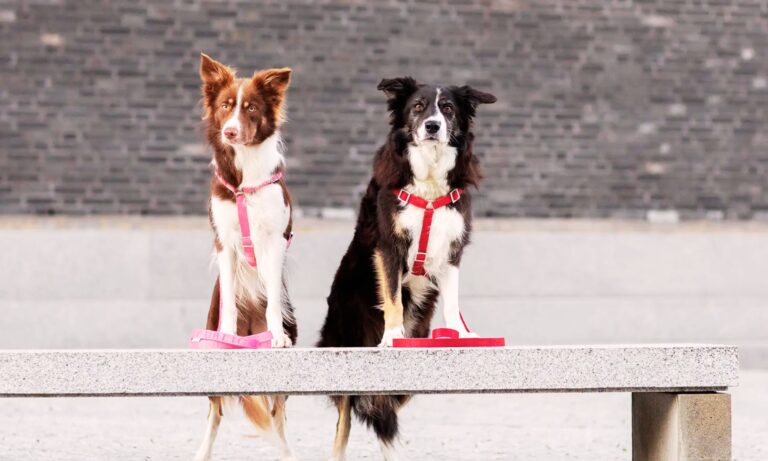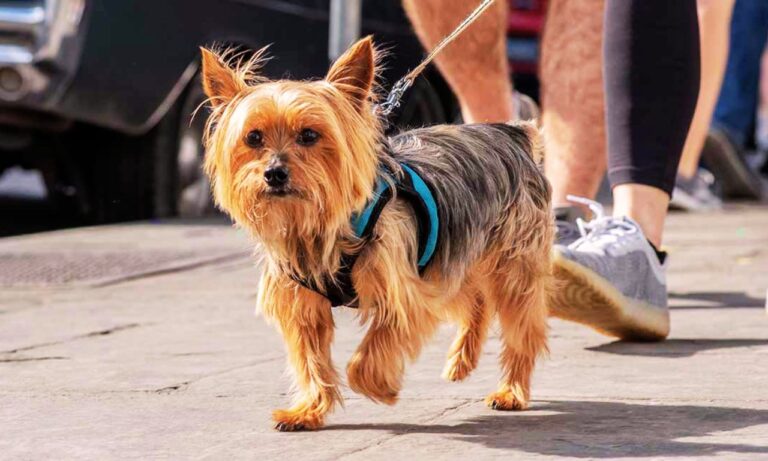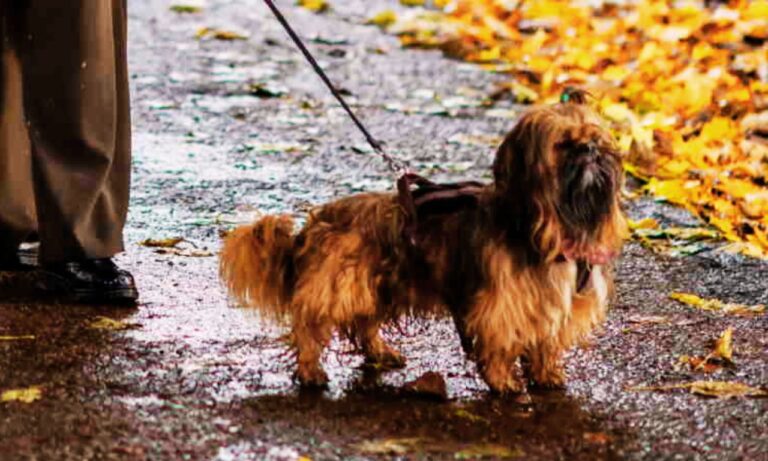Fluffy white fur, sparkling eyes, and a permanently happy smile — if you’ve ever seen a Japanese Spitz, you already know they are little clouds of pure joy. But when it comes to “Japanese Spitz breeds of dogs,” things can get a little confusing. Is there more than one kind of Japanese Spitz? How do they differ from other similar-looking breeds?
Today, we’re diving into everything you need to know about the magical world of the Japanese Spitz, their origins, related breeds, and why they capture the hearts of dog lovers everywhere. To discover what activities bring joy to Australian Cattle Dogs, check out this detailed guide on What Do Australian Cattle Dogs Love.
Blog Highlights
ToggleIs There More Than One Type of Japanese Spitz?
Let’s clear up a common misconception right away:
There is only one officially recognized Japanese Spitz breed — but because of their close resemblance to several other Spitz-type dogs around the world, people often wonder if there are multiple types.

The Japanese Spitz is a distinct, standardized breed developed in Japan in the early 20th century. There are no “different breeds” of Japanese Spitz — but they do share lineage and striking similarities with other spitz-type breeds like the American Eskimo Dog, Samoyed, and German Spitz.
What Exactly Is a “Japanese Spitz Breeds of Dogs” Dog?
“Spitz” isn’t a breed itself; it’s a group of dogs that share certain physical and personality traits.
Spitz dogs typically have:
- Thick double coats
- Pointed ears
- Curled tails that rest over their backs
- Fox-like faces
- Adaptability to cold climates

The word “spitz” comes from German, meaning “pointed,” referencing their sharp features.
The Japanese Spitz fits perfectly into this ancient and fascinating category. Find out what color collar looks best on a Rottweiler to complement their bold appearance and highlight their unique features.
The Birth of the Japanese Spitz Breed
The Japanese Spitz’s story begins in the 1920s and 1930s.
Here’s how it happened:
- Imports: Breeders in Japan imported several white spitz-type dogs from various countries, including Germany, Canada, and the United States.
- Crossbreeding: They selectively bred these dogs, aiming for a smaller, companion-focused version of larger Northern breeds like the Samoyed.
- Standardization: By the mid-1940s, Japanese breeders had developed a consistent, recognizable standard.
- Recognition: The Japanese Kennel Club officially recognized the breed in 1948.
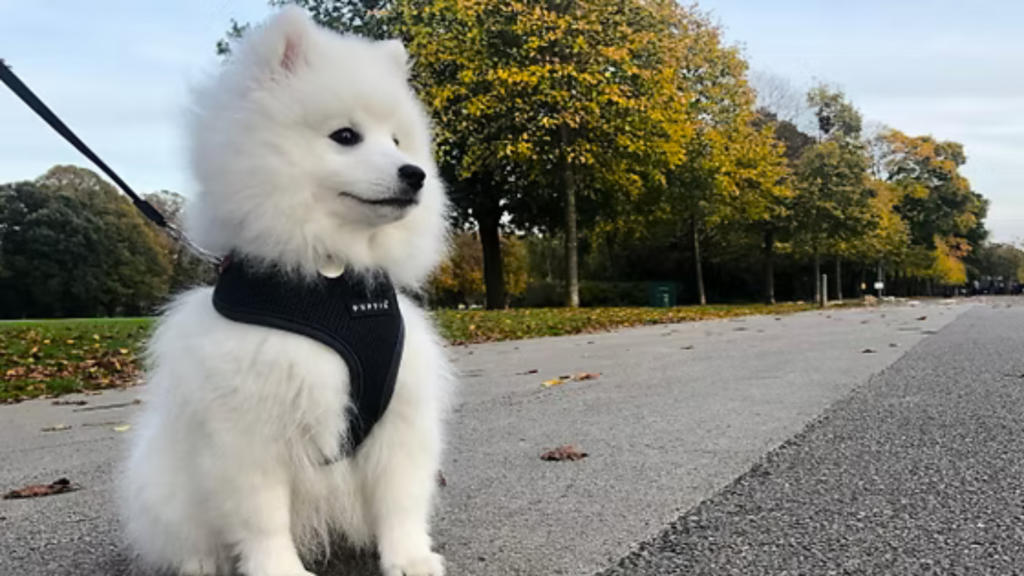
Their aim was simple: a smaller, easier-to-manage family companion with the classic spitz look and joyful temperament.
Key Traits of the Japanese Spitz Breed
Now that we know the background, let’s look at what defines a Japanese Spitz.
- Size: Small to medium (typically 10–14 pounds or 4.5–6.5 kg)
- Coat: Pure white, dense double coat
- Temperament: Playful, intelligent, loyal, and affectionate
- Lifespan: 12–16 years
- Training: Highly trainable and eager to please
- Exercise Needs: Moderate — daily walks and playtime
- Grooming: Surprisingly low-maintenance despite heavy coats; dirt tends to slide off!

These little dynamos are equally comfortable lounging at home or adventuring outdoors.
Japanese Spitz vs. Other Spitz Breeds: Look-Alikes Explained
One of the reasons people get confused about “Japanese Spitz breeds” is because there are several dogs that look remarkably similar.
Let’s compare the Japanese Spitz to some of its closest “cousins.”
Japanese Spitz vs. American Eskimo Dog
American Eskimo Dogs (sometimes called “Eskies”) are very similar but have a few key differences:
| Feature | Japanese Spitz | American Eskimo Dog |
| Size | Smaller (10–14 lbs) | Larger (toy: 6–10 lbs, mini: 10–20 lbs, standard: 25–35 lbs) |
| Face | Finer, fox-like | Broader skull |
| Coat | Fluffy but lighter | Denser, heavier coat |
| Origin | Japan | United States (German immigrants) |
The American Eskimo Dog tends to be stockier and has a denser coat. Learn what size collar for a Rottweiler is ideal by following this detailed guide to ensure a perfect fit for your dog’s comfort and safety.
Japanese Spitz vs. Samoyed
The Samoyed is much larger — it’s almost like a big sibling in the spitz family!
| Feature | Japanese Spitz | Samoyed |
| Size | 10–14 lbs | 35–65 lbs |
| Temperament | Companion-focused | Working-focused (sled dogs) |
| Coat | Light, easy-to-maintain | Heavy, requires daily grooming |
Samoyeds are gentle giants, while Japanese Spitzes are light, agile lapdogs.

Japanese Spitz vs. German Spitz
The German Spitz comes in different sizes — Klein (small), Mittel (medium), and Gross (large).
| Feature | Japanese Spitz | German Spitz |
| Color | Always white | Various colors |
| Size | Medium-small | Varies widely |
| Popularity | Companion breed | Companion and watchdog |
German Spitzes tend to be a little more vocal and alert.
Japanese Spitz vs. Pomeranian
People sometimes mix up Pomeranians and Japanese Spitzes because of their white coats and fox faces.
| Feature | Japanese Spitz | Pomeranian |
| Size | 10–14 lbs | 3–7 lbs |
| Temperament | Playful and steady | Feisty and spirited |
| Coat | Straight, flowing coat | Puffy, cotton-candy-like coat |
The Pomeranian is essentially a pocket-sized spitz, while the Japanese Spitz is slightly larger and more grounded. Discover the best collars for Siberian Huskies for both style and comfort.
Why People Love Japanese Spitz Dogs
The Japanese Spitz breed has soared in popularity for several amazing reasons.
1. Family-Friendly Nature
Japanese Spitz dogs are extremely affectionate and loyal to their families. They are great with children, love to play, and are generally patient and gentle.
2. Smart and Trainable
Training a Japanese Spitz is usually a breeze. They are clever, eager to please, and pick up commands quickly. Basic obedience, tricks, and even agility training come naturally to them.
3. Minimal “Doggy” Odor
Unlike some breeds, Japanese Spitz dogs are known for their cleanliness. They rarely have that typical “dog smell,” and their fur sheds dirt naturally, keeping them cleaner than you might expect.
4. Glamorous Appearance
There’s no denying it — the white coat, plumed tail, and sparkling eyes make them living, breathing showpieces.
5. Longevity
With a lifespan of 12–16 years, the Japanese Spitz offers many years of loyal companionship. Learn how to put a collar on a Husky with these practical tips.
Challenges of Owning a Japanese Spitz
As magical as they are, owning a Japanese Spitz isn’t 100% effortless.
Grooming Needs
While their coats resist dirt, regular brushing (2–3 times a week) is necessary to prevent matting, especially during seasonal shedding (“coat blowing” periods).
Potential for Barking
Japanese Spitz dogs are excellent watchdogs — which means they might bark at strangers, doorbells, or unfamiliar sounds.
Proper training and socialization from an early age can help manage excessive barking.
Separation Anxiety
They form strong bonds with their owners and don’t like being left alone for long periods. If left isolated, they can develop anxiety behaviors.
Exercise Requirements
Although not hyperactive, they still need daily walks and playtime to stay healthy and prevent boredom-related issues.
How to Choose a Japanese Spitz Puppy
Thinking about bringing one of these snowy sweethearts into your home? Here’s what to consider:
- Reputable Breeder: Always buy from a breeder who health tests their dogs and provides clear lineage documentation.
- Health Guarantees: Ensure your puppy is vaccinated, dewormed, and checked by a vet.
- Observe Personality: Choose a puppy that is friendly, curious, and not overly shy or aggressive.
- Ask Questions: Good breeders will ask you questions too — it’s a sign they care where their puppies end up.
Rescue organizations and breed-specific rescues also sometimes have Japanese Spitzes in need of loving homes! Find out the best collars for Cane Corsos to suit their unique needs.
Fun Facts About Japanese Spitz Dogs
- Nicknamed “Smiling Dogs” because of their perpetual grin.
- Despite their royal look, they are often called “Velcro dogs” because they love sticking close to their owners.
- Their double coat is surprisingly weather-resistant — they can enjoy snowy weather without missing a beat.
- They were designed as companion dogs first — they have no herding, hunting, or guarding history like many other spitz breeds.
- Some Japanese Spitzes have even taken up roles in therapy work due to their gentle, intuitive natures.
Final Thoughts: One Breed, Endless Love
When it comes to “Japanese Spitz breeds of dogs,” remember: There’s only one official Japanese Spitz, and it is truly one of a kind.
However, they share deep historical and physical ties to many other gorgeous spitz breeds from around the world. Each brings its own charm, but few can match the combination of elegance, loyalty, intelligence, and low-maintenance beauty that the Japanese Spitz delivers. Explore the Cane Corso growth and weight chart and nutrition plans.
Whether you’re already lucky enough to own one or are simply daydreaming about your future floofy companion, the Japanese Spitz offers the purest form of canine happiness in one shining white package. 🐾✨


